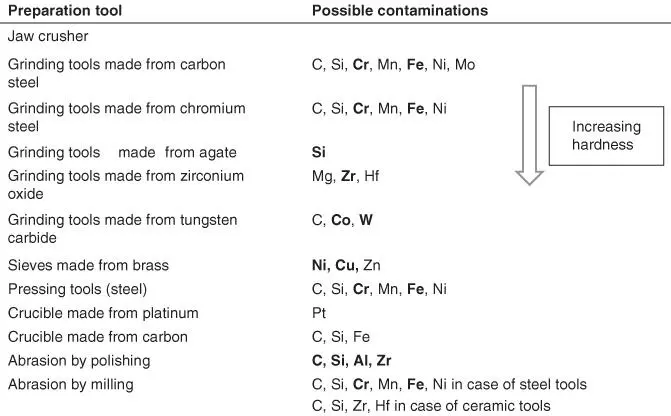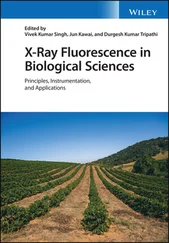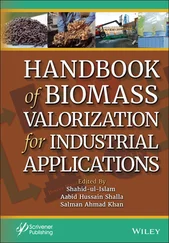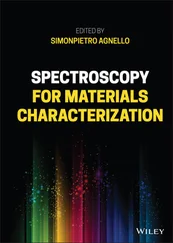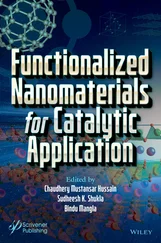
Figure 3.3 Cd intensities measured on polymer samples of different thicknesses.
Source: Courtesy of S. Hanning, FH Münster.

Figure 3.4 Analyzed volume limited by the measurement geometry.
For all preparation steps, the sample material comes into contact with other materials as well as with the laboratory environment. This can cause contaminations. These should, however, be avoided as far as possible in order not to influence the analytical result. Contaminations by the laboratory environment are usually in the range of trace amounts, in case of observing good laboratory practice. Another source of impurities is the contaminations by the sample preparation tools (e.g. mills, crushing tools, melting crucibles, etc.). Furthermore, if the preparation tools are not sufficiently cleaned, cross-contamination can occur as a result of transfers between the individual samples.
Table 3.5 Contaminations in the range of traces by preparation tools (main contaminations in bold).
Because contamination cannot be completely avoided, such as by abrasion of the preparation tools, it is important that these contaminations do not affect the analyte. This is especially the case when the analytes are present in trace amounts. Changes in the contents of the main components due to traces can be neglected as well as any noticeable influence on the matrix.
Table 3.5summarizes some typical impurity elements that can be introduced during the different steps of sample preparation.
The homogeneity of samples for bulk specimens as well as glasses or metals and also for powder pellets can be determined by measurements at different specimen positions with a position-sensitive instrument; some examples are shown in Section 16.6. It is also possible to determine inhomogeneities by repeated measurements after the removal of sample layers. In this case, inhomogeneities perpendicular to the surface of the sample can be identified, in other words, layer structures. Furthermore, three-dimensionally distributed inhomogeneities can be detected in this way.
Minor sample inhomogeneities as well as surface roughness can be partially compensated by a rotation of the sample during the measurement.
One possibility for the determination of the reproducibility of the preparation procedure is to repeat several times the entire analysis process including sample preparation, measurement, and evaluation. One can then compare the results obtained from the repeated measurements.
Sufficient homogeneity or reproducibility is achieved if the average value and standard deviation of the results of repeated measurements at the same sample position or on the same sample differ only insignificantly from the results obtained from different sample positions or at different samples. The calculation of the mean value and the standard deviation is shown in Section 6.1.1. Examples for homogeneity tests are discussed in Section 16.6.
3.3 Preparation of Compact and Homogeneous Materials
3.3.1 Metals
Metals here mean both pure metals and metal alloys. This may be a wide variety of iron alloys, nonferrous metal alloys, or hard metals.
The preparation of metals for a measurement depends on the starting material as well as on the analytical task. Casting from the melt is possible. In the case of inhomogeneous alloys, remelting is also possible. The resulting specimens first have to be adapted to the geometry of the respective measuring instrument by mechanical processing, such as cutting, drilling, or sawing and then a clean and plane surface must be prepared by milling, grinding, or polishing. For the sampling from liquid melts, probe samplers are available with which, under reproducible conditions, homogeneous samples can be produced whose external form is directly fitted for the measuring instruments (see Figure 3.5). For castings, depending on the casting mold, removal of a surface layer is required to eliminate the influence of surface segregation and corrosion. Castings should always be produced under the same conditions, i.e. temperature and mixing of the melt, cooling rate, and sample geometry to ensure high reproducibility.
Conversely, the material to be analyzed can also present a compact metal body that already has been subjected to mechanical deformation, e.g. plates, bars, or tubes; they must be prepared by modifying the shape and by processing the surface to a measurement sample. The aim is always to produce a homogeneous sample with low surface roughness.
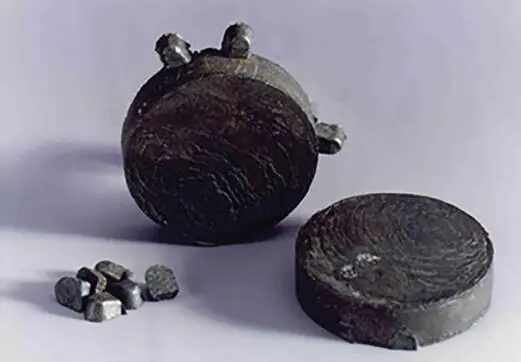
Figure 3.5 Specimen generated by sampling from a melt.

Figure 3.6 Influence of surface roughness on the measured fluorescence intensity.
Source: According to Willis et al. (2014).
Usually, the surface roughness obtainable by grinding or milling is sufficient for the analytical task. If a surface treatment is required by polishing, care must be taken that the polishing agent does not penetrate into the sample and cause contamination. This is especially likely in the case of relatively soft sample matrices, such as aluminum samples, in conjunction with hard polishing agents. This effect can be avoided by using other surface processing methods, such as milling. For hard sample matrices, polishing is often the only way to process the sample surface. Here, the risk of contamination is relatively low and can be largely avoided by subsequent cleaning procedures, for example, washing in an ultrasonic bath.
The measured intensities can be influenced by the surface roughness of the samples. It should be taken into consideration that this influence is greater for small fluorescence energies, in particular for heavy matrices, but smaller for high fluorescence energies in light matrices. The dependence of the measured fluorescence intensities of pure metals on the surface roughness of the sample is shown in Figure 3.6.
Glasses are amorphous substances that can contain very different elements, usually in the form of oxides; they are dissolved in glass formers and have typically a good homogeneity and a high surface quality. Glasses are available in very different forms for the analysis: commercial flat glasses, molded glass, and glass in art objects. Glassy beads are also frequently produced with the goal to obtain homogeneous samples from minerals or other small-particle materials. In this way, not only surface effects but also mineralogical influences can be neglected.
To keep contaminations small during the melting process, Pt crucibles are used. During the melting of the glasses, low melting temperatures are required in order to avoid or reduce the loss of easily volatile elements in the melting process. LiBO 2(lithium metaborate), Li 2B 4O 7(lithium tetraborate), or Na 2B 4O 7(sodium tetraborate or borax) are used as melting agents and glass formers (see Section 3.4).
Читать дальше



